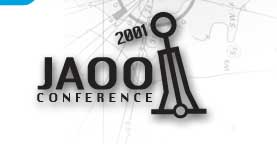|
|
 |
<bigwig> service: jaoo
BIO:
Frank Buschmann is Software Engineer at Siemens Corporate Technology
in Munich, Germany. His research interests include object technology,
software architecture, application frameworks, and patterns. He has
published widely in all these areas, most visibly as a co-author of the two
volumes of the Pattern-Oriented Software Architecture book series:
"A System of Patterns" and "Patters for Concurrent and Networked
Objects".
In his development work, Frank has lead the design and implementation of
several large-scale industrial software projects, including business
information, industrial automation, and telecommunication systems.
When not at work Frank spends most of his time enjoying life with his wife
Martina, watching the time go by in Munich beer gardens, having fun biking,
skiing, and horse-riding, getting excited when watching his favorite soccer
team Borussia Dortmund, dreaming when listening to a performance at the
Munich opera, and relaxing with rare Scotch single malts before bedtime.
KEYNOTE
Notes on the Forgotten Art of Building Software Architectures
Everybody is praising the benefits of contemporary
distributed object computing and component middleware.
CORBA, J2EE, COM+, EJB, and other platforms are used in everybodies
working environment, and new such platforms are announced
almost every new year, such as .NET. All these platforms promise to make
software develompent easy, productive, and successful.
Unfortunately, exactly these benefits are these platforms
biggest drawback! For example, it is true that CORBA, J2EE, .NET, and
other platforms make it easy to access a remote component and
use its services. This "easyness", however, raises the illusion
that it is a child's game to master the inherent complexities of
large-scale distributed systems with stringent end-to-end quality
of service requests, just by passing the responsibilities for
these concerns to the middleware used.
The consequence of such misbelief is that
managers, designers, and developers tend to pay less and less attention
to the architecture of the systems they are building. Ultimately,
this leads to the failure of these projects.
All contemprary platforms can only help you in doing your job.
They will not do yuur job for you. Calling for the next 700 middleware
platforms that hopefully will resolve these "problems" is the
wrong conclusion, however. Rather every person in the software
business should acknowledge that there is no substitute for human
intelligence, creativity, experience, dilligence, and judgement.
Software architectures must be built with care. Otherwise the
resulting systems will not only use the underlying middleware
ineffectively, they will also not provide the functional and
non-functional requirements they are supposed to meet.
This talk therefore explores some of the secrets of building
high-quality software architectures, in terms of methodology,
design goals, and architectural properties, in order to recall
the foundations of the forgotten art of building successful
software into everybodies mind.
|
|

|
Presentations:
Notes on the forgotten art of building Software Architectures (Keynotes, Software Design & Architecture)
Frank Buschmann, Siemens CT
Tuesday [13:00 - 14:30]
Conference Hall
Slides from this presentation
Next speaker

|




